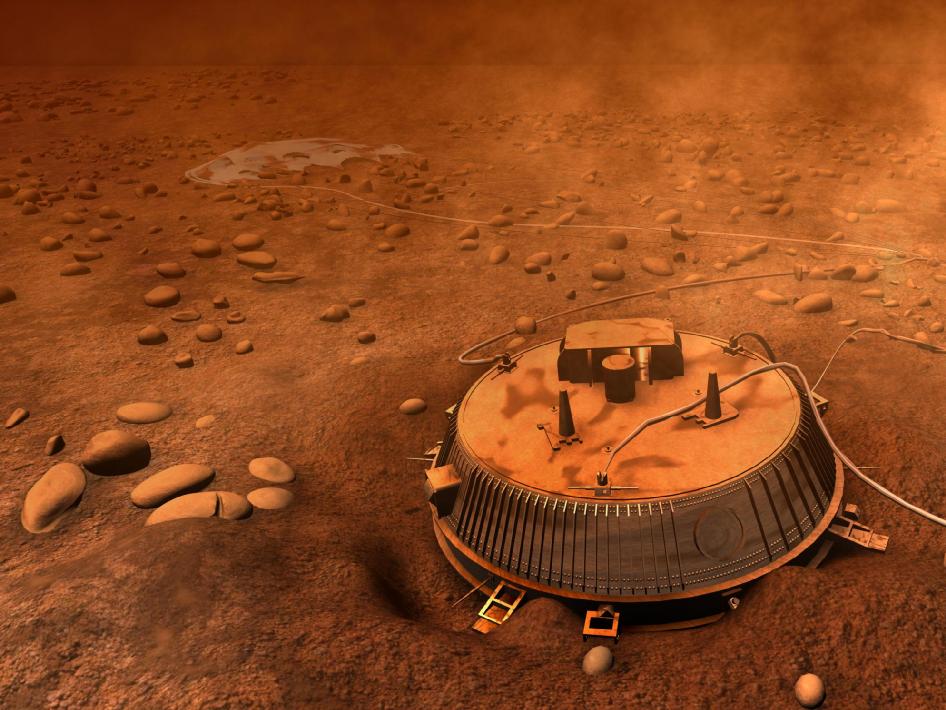Huygens Probe
Huygens Probe
The Huygens Probe was part of the joint ESA-NASA Cassini-Huygens mission to Saturn and its moon, Titan.
Exhibit Section:
El Pomar Space Gallery
Event Access:
Open to the public.

Mass: 701 lbs.
Major Instruments:
Huygens Atmospheric Structure Instrument
Doppler Wind Experiment, Descent Imager
Gas Chromatograph Mass Spectrometer
Aerosol Collector
Surface Science Package
Program Managers:
European Space Agency
Italian Space Agency
NASA
Launched: October 15, 1997, aboard a Titan IV-B from Launch Complex 40, Cape Canaveral AFS
Deployed at Titan: Spacecraft separation, December 25, 2004; landing, January 14, 2005
Manufacturer: Thales Alenia Space (then Aerospatiale)
Model Scale: Actual size
The Huygens Probe was part of the joint ESA-NASA Cassini-Huygens mission to Saturn and its moon, Titan. Huygens was carried to the Saturnian system aboard the Cassini spacecraft, which continued to study Saturn after launching Huygens into the dense atmosphere of Titan. The main Huygens mission, a parachute descent through Titan’s atmosphere, revealed a dense cloud atmosphere at the surface, about 20 kilometers thick, and a muddy landing site featuring chunks of water ice swimming in a haze of methane. Titan’s weather is believed to feature torrential downpours and flash flooding, interspersed with decades or centuries of drought; surface features include boulder fields, sand or clay swamps and numerous hydrocarbon lakes and seas.
On loan from the NASA Jet Propulsion Laboratory.

